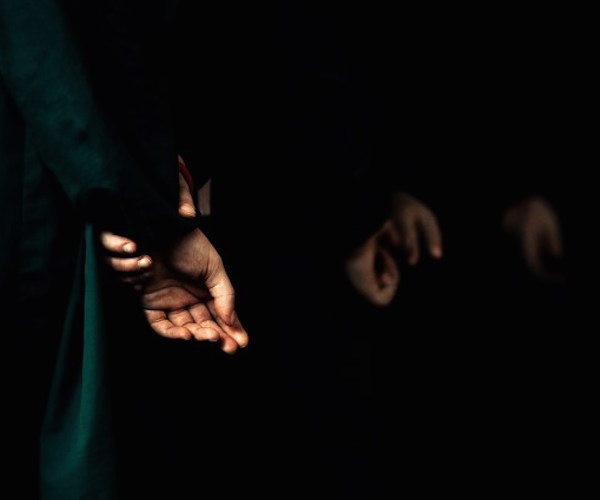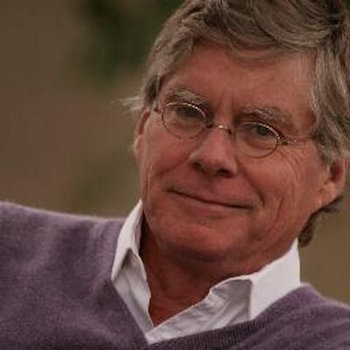Book Review: “The Language of Light” — History With a Point of View
Shea’s is a powerful voice for the legitimacy of Sign Languages of the Deaf and for visual communication as an essential human right.
The Language of Light: A History of Silent Voices by Gerald Shea. Yale University Press, 288 pages, $26.
By Joann Green Breuer

Gerald Shea’s clear and compelling history of deaf communication in a hearing world does not disguise the author’s agenda. A brief paragraph in his opening chapter on the limits of cochlear implants temptingly dangles a contention that is not followed up until his closing chapters, which make fierce attempts to close his case. Much of the speaking population, particularly hearing parents of deaf children, speech pathologists, and otologist surgeons may differ, but Shea’s is a powerful voice for not only the legitimacy of Sign Languages of the Deaf (I will explain orthography momentarily), but also for visual communication as an essential human right.
Shea describes himself as person with ‘partial hearing.’ He wears hearing aids, which help him discriminate among spoken words. Even with this assistance, however, it is a skill he has not completely mastered. (Note: This reviewer is hearing. Having worked among theater companies for the Deaf, I am familiar with American Sign Language enough to appreciate its exacting sense, and my lack of mastery of it. About orthography: deaf (small d) refers to a physical condition. Deaf (capital D) connotes those who use sign language as their primary method of live communication.)
The Language of Light offers a harrowing tale of how the deaf were ‘treated,’ that is tortured, in medieval times. The methods included hot coals and holes drilled into heads. Shea might contend that present-day teaching methods of deaf students, such as the forbidding of signing (to the extent of tying hands behind backs) presents a slyer kind of agony — psychological rather than physical. The common denominator is dehumanization. Communion matters, and is our human identifier.
In Shea’s version of history, there are heroes and villains. His emphasis is on the distinctive value of every language, which he sees as the expression of a preexisting idea. Each language contains a unique structure or grammar. There is no good reason that a signed language need mirror that of an oral one.
Those who recognize alternative languages are the heroes. Those who refuse to do so are the villains. Among the volume’s early heroes are Auguste Bebian (1789-1839), a hearing linguist who learned French Sign Language (LSF) fluently by observing Deaf students in conversation with each other. Before Bebian there were attempts to match spoken French with methodical signs; the result were stumbling, awkward stabs at comprehension. Such efforts amounted to a denial of an actual signed language. Roch-Ambroise Cucurro Sicard (1742-1822) and Jean Massieu (1722-1846) were recruited by the first person (perhaps) to create a formal education for the deaf: Charles-Michel de (abbe) L’Epee (1803-1886). L’Epee’s leap of imagination was propelled by his belief that deaf individuals were capable of learning, to become active members of society and to be saved as Christians, as minister Laurent Clerc (1785-1869) had advocated and instructed.
Saint Jacques, l’Institut national de jeunes sourds (the National Institute for Deaf Children), was l’Epee’s foundational legacy. It was l’Epee who accompanied Edward Gallaudet (1787-1851) to the United States to establish the American School for the Deaf in Hartford, Connecticut in 1816. St Jacques’ greatest teacher was a providencial hire, a Deaf man named Ferdinand Berthier (1803-1886). L’Epee’s revolutionary realization (from someone in the hearing world) was that signed communication could be a veritable language. It seemed LSF might be the educational path for those born without hearing. But that was not to be, for many years; there were multiple arguments and bushelfuls of wishful thinking to come. The villains arose.

Photo: Languages by ArTeTeTrA via Flickr
The villains were (are?) the oralists, whose leaders included the highly esteemed American inventor Alexander Graham Bell (1847-1922). For the sake of furthering his point of view, Bell denied what he knew, intimately, about the limits of oral communication for the deaf. (Bell’s mother and wife were hearing impaired.) His pronouncements held sway over educational theories for a century. Bell feared that signing Deaf would associate with other signing Deaf; the upshot would be the propagation of a ‘race’ of deaf, a eugenic consequence to be shunned. The event which codified oralism as a preferred — at least by hearing persons — teaching method was the Congress of Milan. The first meeting in 1800 was succeeded by a second congress a few years later, in which Bell was an iconic figure. The congress’s resolutions were: speech is ‘incontestably’ superior to sign, and simultaneous sign/speech is ‘prejudicial’ to speech. The Milan Congress declared that the oral method ‘must’ be used in teaching deaf children. And thus began (the statistically proved) the downward academic trajectory of deaf individuals. Shea hints at what he believes Bell’s motivations might have been, but he holds his definitive tongue. The results of oral teaching: 80% deaf are functionally illiterate. As the deaf educator Berthier incisively noted: “if you lose your language, you have nothing.”
A fascinating chapter in the The Language of Light deals with deaf/blind Helen Keller. All who witnessed and trusted Patty Duke’s astounding television and stage interpretation will be sorely disabused of that representation as truth. Annie Sullivan, her constant companion/teacher did not tame a wild thing into a literary accomplishment. Keller may well have been immensely gifted, but she was using comprehensible ‘home signs’ before Sullivan appeared and she minded her family-taught manners. Shea proves that a large portion of Keller’s ‘autobiography’ (written at the age 24) was plagiarized. Her striking use of sound and sight imagery in her writing, her prepared answers in public appearances, reflect the hand of Sullivan rather than the finger spelling of Keller. For Bell, Keller became ‘a symbol of oralism,’ whom he exploited to prove his pedagogic theories. Those theories prevailed until an influential scholar hero, William Stokoe (1919-2000), a long-time professor at Gallaudet University, a federally chartered private university for the education of the Deaf and hard of hearing, demonstrated that American Sign Language is a valid language. A radical protest movement in 1988 (Deaf President Now) at Gallaudet University succeeded at its goal, winning administrative recognition of the Deaf and hard of hearing’s linguistic birthright.
Stokoe, a professor of Linguistics, came to his epiphany while attending a lecture on Wuthering Heights. He watched Deaf students in heated conversation and through an interpreter learned that their discussions of the Bronte novel displayed perceptive intelligence and delicate nuance. With the assistance of linguist Noam Chomsky, he set out to demonstrate that language is an organic structure, whether as discreet sounded words or via the eloquence of meaningful visual signal. American Sign language, he demonstrated, is a specific language capable of recursion, that is, it contains the ‘possibility of more than one proposition within a single statement.’ On a Paris stage, Emmanuelle Laborit movingly proved this in her memorable 2007 performance as Cordelia in LSF.
The battle continues. In 1978, Australian Graeme Clark improved the — to that point in time — useless cochlear implant. Now 80% of deaf infants’ parents and doctors choose to have that complex, intrusive operation, which is intricately described and illustrated by Shea. For those who are post-lingually deaf, the procedure seems to be helpful, principally because they retain memory of sound and habit of speech. Shea writes that the jury is still out regarding cochlear implant aid for pre-lingual children. The latter have never heard speech, and must learn to distinguish it from ambient sound. They have never heard their own voices, so modulation is random.
There are no long term studies because implant technology is so recent. The evidence is that when the Deaf become adults and are on their own, unpressured by the vocal world, they resort, among themselves, to their own language, and are extremely grateful to non-native signers who make attempts to use it, however haltingly.
Note: ASL is not signed English. Its grammar is unique. For example, it stresses important information first; ASL relates verb quality through movement, time through placement. Facial expressions matter. Unlike spoken language, one has to look to understand. For the hearing person, that means he or she has to get used to being looked at when using ASL

Author Gerald Shea — a writer on a mission.
As for lip reading, it is a guessing game, even for extremely talented readers. Of course, you can attempt to read only one pair of lips at a time; also, many consonants and vowels are formed behind the veils of lips, beards, and muzzling tics.
The volume includes several appendices. The diagrams of the alphabet signs are far more helpful than Shea’s earlier descriptions – though he does forget ‘u’. The graphically accurate illustrations of cochlear implant surgery are not for the faint of stomach; their inclusion may be seen as an unfair means of arguing against the procedure (cf abortion pictorials).
The Deaf comprise about 0.25% of American population. It is reasonable, if sometimes futile, for most hearing parents of deaf children to desire for their children to be part of the mainstream, to fit in with the majority. Most teachers of deaf children are hearing. Their linguistic biases are difficult to shake; statistics about the value of ASL do not necessarily shape attitudes. The truth is that, when one has any language, say ASL, it makes it far easier to learn another language, say English, than when one has no language at all. Complicating the issue is that ours is an age that embraces technology as a solution. We are tempted to believe that difference signifies that something is amiss, needs fixing — and is fixable. Shea’s use of logic, backing up by statistical evidence, will probably not be all that convincing to many. Those who hear may continue not to heed his argument, and those who cannot hear may not be in need of it. However, The Language of Light is valuable because it presents a worthy, necessary, and vital point of view.
Joann Green Breuer is artistic associate of the Vineyard Playhouse.
